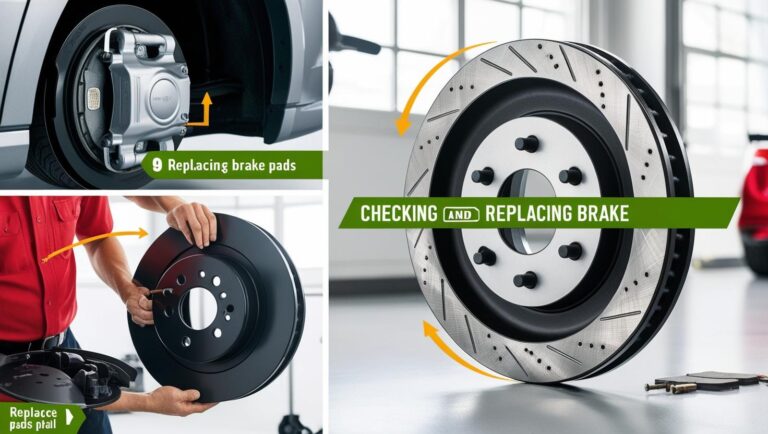Maintaining your vehicle’s brake system is critical for ensuring safety on the road. While there are numerous components to consider, brake pads are at the center of any examination or maintenance work. They play a vital role in bringing your vehicle to a stop and are subject to wear and tear over time. This essential guide aims to provide you with the knowledge you need to check and replace your brake pads effectively, enhancing your vehicle’s performance and safety.
Essential Guide to Checking Your Vehicle’s Brake Pads
Checking your vehicle’s brake pads regularly is an essential part of routine maintenance. Start by listening for any unusual noises when you apply the brakes, such as squealing or grinding. These sounds are often the first indication that your brake pads may be worn out and in need of replacement. Additionally, if you notice that your vehicle takes longer to come to a complete stop, it’s time to inspect the brake system. It’s crucial to address these signs early to prevent further damage to the braking system.
Once you’ve recognized the signs of potential brake pad wear, physically inspecting the pads allows for a more comprehensive assessment. To do this, you’ll need to remove the wheels to gain access to the brake components. Most brake pads have a wear indicator slot, which serves as a guide to determine the remaining life of the pad. If this slot is no longer visible or is barely visible, it’s likely time for a replacement. Furthermore, if the brake pad thickness is less than 3mm, replacement should be considered to maintain optimal braking performance.
For a more in-depth check, measure the brake pad thickness with a caliper. Generally, new brake pads are about 10-12mm thick, and as they wear down, the effectiveness of your brakes diminishes. It’s essential to ensure that both brake pads on an axle wear evenly. Uneven wear can indicate other issues, such as a malfunctioning caliper or improper wheel alignment, which might necessitate further inspection and repair by a professional mechanic. Regular checks can save you from unexpected failures and costly future repairs.
When and How to Replace Worn-Out Brake Pads
Replacing worn-out brake pads is a straightforward process that can be done at home with the right tools and knowledge. The ideal time to replace brake pads is when you notice they have worn down to about 3mm thickness. Ignoring the signs of worn brake pads can lead to damage to the rotors, which is a more costly repair. Your vehicle’s manual often provides a guideline on the lifespan of brake pads. However, actual wear can vary with driving habits and conditions, so use these recommendations as a general guide.
To replace your brake pads, first ensure that the vehicle is securely lifted and supported with jack stands. Remove the wheel to access the brake caliper, which holds the pads in place. The caliper can usually be removed by loosening a few bolts. Once the caliper is off, the old brake pads can be taken out. Before installing new pads, inspect the rotors for any signs of damage or uneven wear. If the rotors are in good condition, proceed to fit the new brake pads into place. Reattach the caliper and ensure that all bolts are securely fastened before moving on to the next wheel.
After replacing the brake pads, it’s important to bed them in or break them in properly. This process involves a series of gentle stops to heat the pads and rotors gradually, allowing them to form a consistent and even surface. Proper bedding ensures optimal performance and longevity of your new brake pads. Once complete, take your vehicle for a test drive to ensure everything is functioning correctly. If you experience any issues, such as continued noise or poor braking performance, consulting a professional mechanic for further inspection is advisable.
Checking and replacing your vehicle’s brake pads is an essential maintenance task that can significantly affect the safety and performance of your car. By conducting regular inspections and timely replacements, you can ensure that your brakes respond correctly in emergencies. Remember, maintaining your brake system is not only about prolonging the lifespan of your vehicle but also about keeping you and others safe on the road. Whether you choose to undertake these tasks yourself or seek professional assistance, prioritize your vehicle’s braking system as a key aspect of responsible vehicle ownership.


















